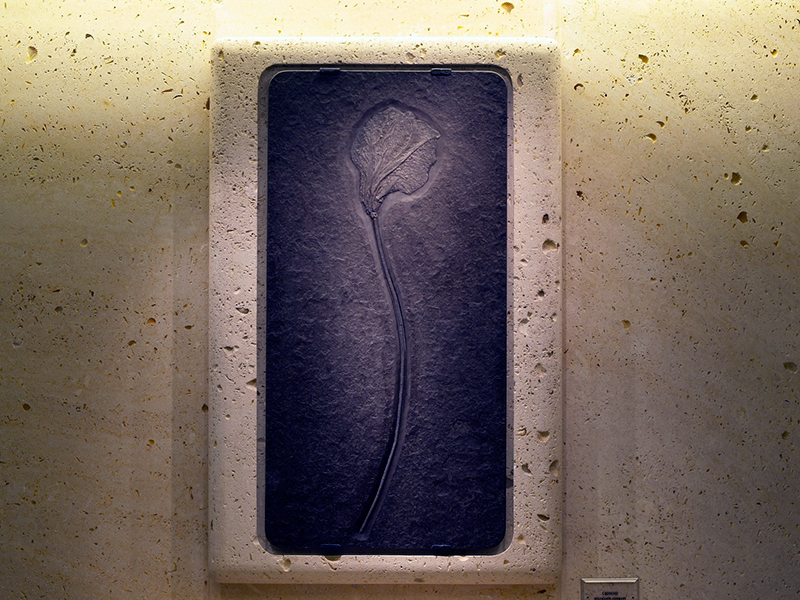Locality: Holzmaden, Baden-Württemberg, Germany (southeast of Stuttgart)
Geologic Range: Ordovician to present (500 million years ago to present)
Approximate Age of Specimen: 172-180 million years ago (Lower Jurassic)
Description:
Crinoids (Class crinoidea) are assigned to the phylum Echinodermata, which is a group of radially symmetrical marine animals, such as the starfish, sea urchins, and brittle stars. Crinoids are commonly referred to as "sea lilies". These flower-like marine, invertebrate animals are beautifully colored and live as solitary individuals.
This species (Seirocrinus subangularis, of the family Pentacrinitidae) is characterized by a globular body enclosed by a small calyx, from which freely moving "arms" extended upward to gather the animal's food. At the bottom of the jointed, flexible stem, but missing from this specimen, was a "root-like structure" by which it was attached to the sea bottom or to plant material (Rasmussen, 1977). Specimens of this species have distally tapering stems up to 18 meters (63 feet.) long (Treatise of Invertebrate Paleontology, p. T865).
This 1-meter-long (3.5-foot) single crinoid is well preserved in fine clays and silts which eventually formed the bituminous, Poisidonia Shale. To better expose the crinoid, some of the shale around the specimen has been partially removed. Chemical alteration has replaced the original, skeletal hard parts of the fossil with pyrite. Specimens of the small pelecypoda (clam), Posidonia bronni, are present in the matrix.
